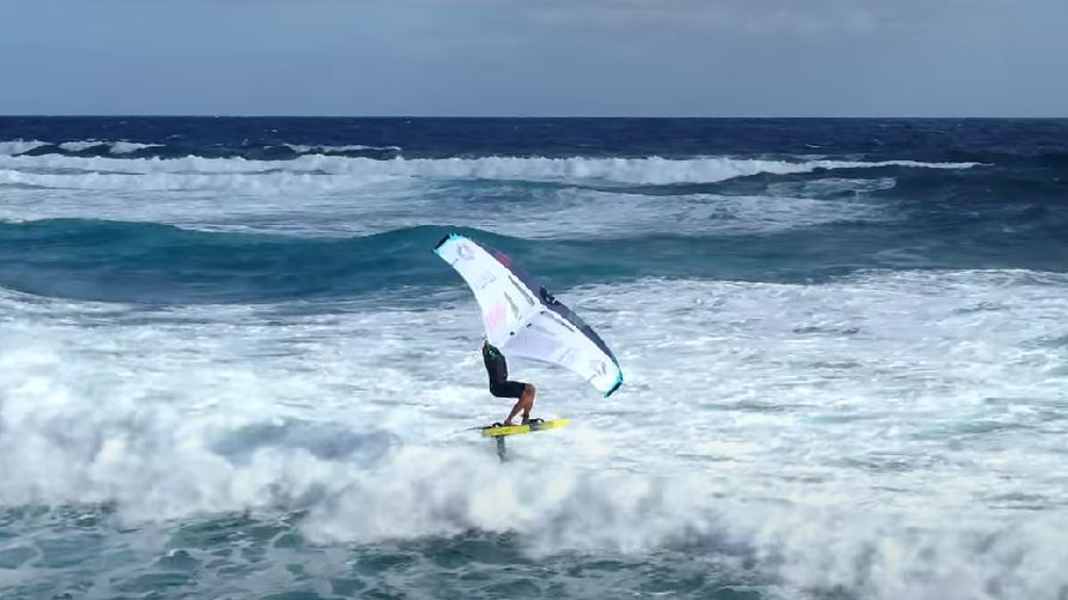
Wingfoiling in the waves is becoming increasingly popular, as you can enjoy endless rides on swell waves. Things get more difficult at spots where the waves don't roll gently but break. Crossing the white water always poses problems for wingfoilers. In this clip from the Duotone Foil Academy, you can find out what you should pay attention to in order to foil safely through the surf.
Wingfoiling in the surf - prerequisites
If you want to start wingfoiling in the waves, you should do so at a spot with moderate waves, where the waves are no higher than 1.5 metres and, if possible, do not break too powerfully. The following applies here: If the ground rises slowly, the waves tend to break gently and further away from the shore - this is ideal for the start. If waves from deep water hit a shallow obstacle - such as a shallow sandbank or a steeply sloping beach - powerful surf is created, which makes the first steps unnecessarily difficult and also creates the risk of material breakage. The wind direction is also a factor: if the wind is flat onshore and therefore coming from the same direction as the wave, crossing the white water is comparatively challenging. Spots where the wind blows sideways to the wave ("sideshore") or diagonally onshore ("sideonshore") are better suited for the start. And when it comes to riding skills: if you have mastered the basics such as starting, travelling upwind and tacking/jibing, you are well equipped to learn how to ride your first waves.
Crossing white water on the foil - the best tips
To cross the white water in the best possible way, pay attention to the following points:
- On the approach you should fly the foil at about medium height
- Just before you hit the white water, bring the bow up by pressing lightly on the back leg so that you don't get caught in the white water
- When crossing the white water, bend your knees like a shock absorber and keep your body upright over the board (do not lean back!)
- As soon as you have crossed the crest of the wave, shift your weight from the back foot to the front again so that the foil does not come to the surface behind the crest of the wave
You should also take a look at our basic wave tutorials, with tips on getting in, paddling out and catching your first waves. You'll find all the links below. Have fun practising!
